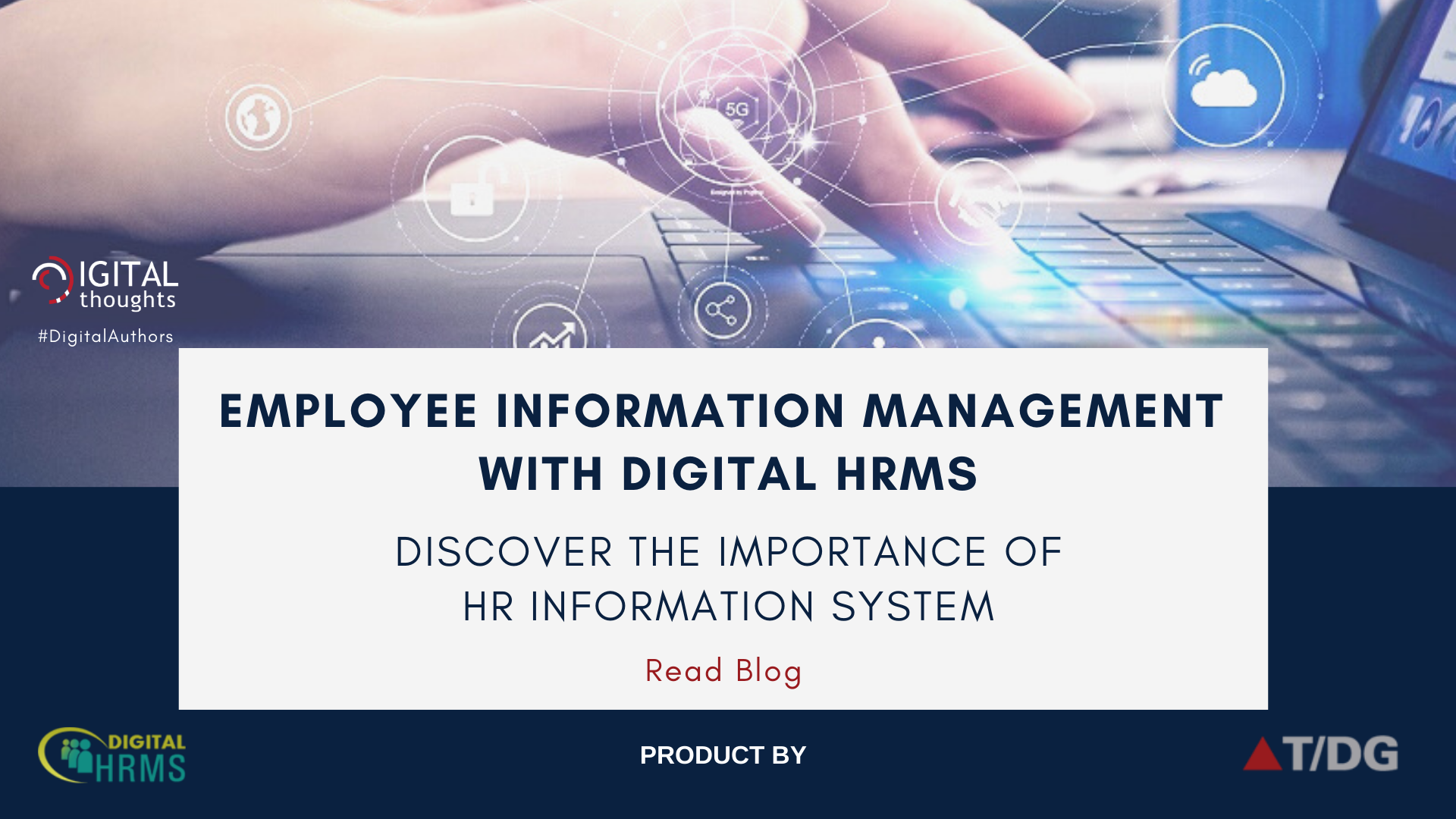Employee Information Management with Digital HRMS: Understanding the Significance of Information System in HR

This is the era in which information or data is the biggest determining factor. Enterprises today are looking for new ways to tap the hidden potential of data and derive insights from it for the benefit of the business. As data becomes the most significant asset for a business, there is a rise in the threats to data security. The HR department is one that works with large volumes of data and it mostly comprises of sensitive employee information and confidential organisational data. Hence, it becomes all the more important to manage and govern this data in a systematic manner, so as to prevent the loss of data, unauthorised access to data and information security threats.
When it comes to employee information management, security is just one aspect. Employees in an organisation should have knowledge of their personal data collected by the organisation. After all, it's their personal data and they have the rights to view and edit their personal information. Digital HRMS makes this possible through its Employee Information Management module. This module showcases all the relevant information about the employees and every employee can view their own details categorised under the different relevant tabs under the following 2 broad categories:
1] Personal Information
Users can add and save employee information such as Passport details, Visa information, nomination, bank details, family details and emergency contact details, etc. on the human resource planning software. It also provides the users with the option to hide or view history. Represented in tabular format, this option lists out the changes made on the HRMS software and the date when the changes were made.
2] Professional Information
Detailed educational information, such as the University name, subjects, discipline, year, certification details, including data such as reasons for missing years, etc. can be saved on the HRMS software by the HR personnel/Administrator. Users can also add information about the current and past employment including skills used, salary, job titles held, key responsibilities, and office locations, etc.
The employee has the right to edit the information on some of the tabs, while the information for the can only be filled with prior permission from the HR department. The Manager can view the details of the members of his/her team, while the HR reserves the right to view the details of all employees in the organization.
Effective management of employee information can help the HR department to increase the efficiency of various HR processes, including resource allocation, employee benefits, management, performance assessment & appraisals, employee training management, emergency healthcare, and more.
Benefits of Employee Information Management with Digital HRMS
Here are some of the key benefits of implementing employee information management with Digital HRMS.
- Easy And quick access to employee information.
- Transparency from the employee’s point of view regarding the management of personal employee data.
- Easy availability of employee data for analysis by the HR team.
- Increased levels of efficiency regarding the information management process.
- Boost in employee morale.
- Assured security of employee data.
- Prevention of unauthorized access to employee data.
Want to explore how Digital HRMS can help your business implement an effective and accurate employee information management system? Visit our website www.digitalhrms.com or drop us an email on marketing@digitalhrms.com and our team will get in touch with you.
